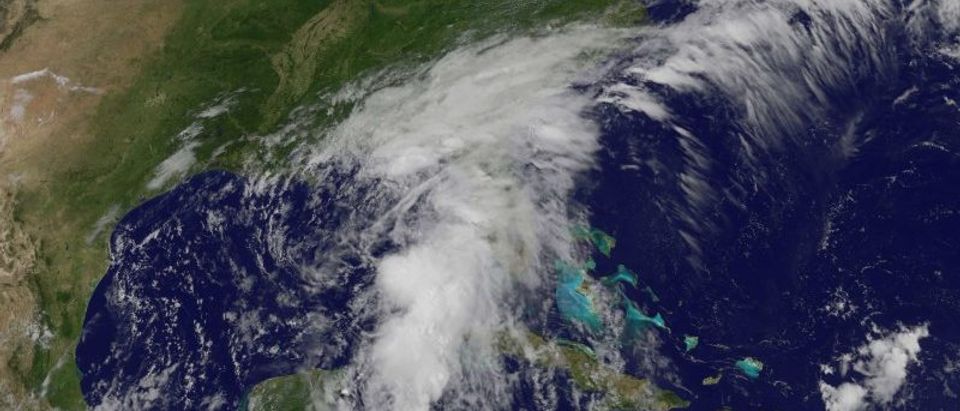Tropical Storm Colin left the southeastern states and headed toward the North Atlantic leaving up to 10 inches of rain, some wind damage and minor flooding. An estimate of damage to structures has yet to be completed, but compared with storms in recent years, coastal residents have avoided hurricane-force devastation.
The beginning of June is early in the year for a third tropical storm. The early arrival suggests this may be a busier year than usual for rough weather along the coast. No doubt insurers and the Federal Flood Insurance Fund (NFIP) are reassessing how much more in damage payouts they might face, if the current pace of coastal storms continues.
The Congressional Budget Office (CBO) has just released a forecast of the potential storm costs in a study. CBO concludes that federal costs associated with hurricane damage will increase more rapidly than the economy will grow and that “hurricane damage will rise as a share of gross domestic product (GDP).” Currently, annual hurricane damage averages $28 billion or 0.16 percent of GDP, and this figure is expected to increase to roughly $39 billion by 2075 — in today’s dollars. CBO finds that roughly 45 percent of the increase is attributable to climate change and 55 percent to coastal development. Rising sea levels will threaten existing buildings and infrastructure making flooding during storms even more devastating.
The CBO suggested several ways to reduce federal costs from flood damage, including setting flood premiums to reflect potential losses, shifting costs away from the federal government to the private sector, as well as increasing mitigation – that is, investing in structures more resistant to weather and flood.
The NFIP is a federal government program that offers flood insurance to homeowners with structures that meet some standards for flood plain management and acceptable building codes. NFIP also preaches on the wisdom of staying clear of flood prone areas. Despite this fiscally cautious perspective, the NFIP has managed to accumulate $24 billion in operating debt.
The NFIP is losing money because it is not setting its prices according to risk – effectively subsidizing homeowners in floodplains. In fact, the NFIP explicitly subsidizes one-fifth of its policies to a 50 percent degree, and the other four-fifths of its policies are underpriced by varying amounts.
Subsidizing coastal properties effectively encourages coastal development – the major cause of the increasing storm costs cited in the CBO report. As coastal property is developed, natural storm barriers are reduced. This all puts more lives and property at risk, and ultimately drives up future risks, storm costs and homeowner premiums. This is bad for the economy, bad for the environment and bad for homeowners.
Using actuarial science, bringing all NFIP premiums up to the correct risk-based level would save billions of dollars in losses that NFIP incurs on behalf of taxpayers, and it would slowdown the increasing risk of storm devastation facing properties in a floodplain. Pricing at risk is exactly what private insurers would do, if they were allowed to offer flood insurance to homeowners on an equal playing field with the NFIP.
In fact, it would be very wise to allow private insurers to provide flood insurance. Private insurers would provide the competitive nudge that goads NFIP to operate and price more efficiently, as well as provide consumers with more options and potentially lower prices. Provided that mortgage lenders are obligated to avoid discriminating against state-licensed or federally-licensed private insurers that offer similar coverage as the NFIP, the competition would, in time, shrink the size of the NFIP and its financial losses. Allowing private insurers to enter the market would spare taxpayers from the NFIP’s accumulating losses and it would provide consumers with more choice.
Encouraging private competition and repricing NFIP policies to fully reflect flood risk is smart, but it is equally important to mitigate risk. This requires building and upgrading structures that resist storm damage, including adopting stronger building codes. Mitigation works and it is better than just “upping” the premium for imprudently constructed homes in storm exposed areas. A more risk averse approach to flood plain management would help.
The CBO’s report predicts rising costs from increased storm activity and rising seas. It is important that policymakers take steps now by requiring the NFIP to price at risk, allowing private insurers to offer flood insurance and strengthen building codes to mitigate losses. Without these changes, we will remain unprepared for the next major storm.
Steve Pociask and Alan Daley are with The American Consumer Institute, a nonprofit educational and research organization. For more information, visit www.theamericanconsumer.org.


